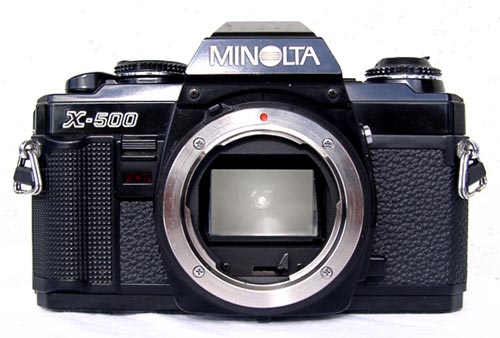

The Minolta X-570 was released in April 1983, two years after the X-700 and was sold as a less expensive alternative to that award winning and very popular camera. Sold as the X-500 in Europe and Asia, and the X-570 in the US market, it never gained the popularity of the X-700 and is still under-rated by many.
What is not recognised by many photographers is that the X-570 is actually in many respects a better camera for the advanced amateur than its more expensive elder sibling. The key to the success of the X-700 with the general public is generally recognised as the camera's Program Mode, which enabled even people with no photographic knowledge to take good photographs. It basically turned the camera into the SLR version of a point and shoot - similar to many of the SLRs today. This feature is only infrequently used by more advanced photographers, who prefer the control over depth of field and exposure provided by the Aperture Priority or Metered Manual modes.
The reason that the X-570 is recognised as more superior by advanced users is that in the period between the release of the X-700 and the X-570, Minolta looked at ways to enhance the performance of the camera through changes to the electronics. While the actual changes were small, they made a huge difference to the camera's value to advanced amateurs.
The first of these changes was the introduction of a display of the selected shutter speed in the viewfinder when shooting in manual mode. Unlike previous bodies such as the XD series, the X-700 did not have a display of the actual manually set shutter speed in the viewfinder, meaning that photographers had to move their eye from the viewfinder to confirm the set speed. The X-570 addressed this problem, not with a mechanical shutter speed display like earlier bodies, but instead through simply displaying the selected shutter speed as a blinking LED in the viewfinder, whereas the metered speed was a constant LED. This simple change makes the X-570 an absolute pleasure to use in manual mode, and means that a photographer need never take his eye from the viewfinder.


